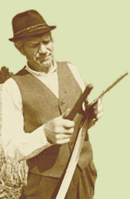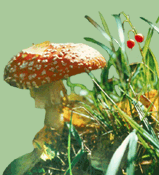How did the Baltic Klint develop?
Igor Tuuling retells an enticing story about the development of our most outstanding relief form. As a matter of fact, the Klint extends farther away from Estonia: from Lake Ladoga to the southern end of Öland. It would be easy to think that the Klint has emerged as result of abrasion by the Baltic Sea, but it is not so. There is another klint terrace in the bottom of the sea between Saaremaa and Gotland, running in the west along the northern coast of Gotland, called the Silurian Klint. The Klint landscape has a questa-relief that can be associated with erosion by river and inclination processes. This river has been called Proto-Neva and it formed the Gulf of Findland and the Baltic Klint. From Miocene to the Quaternary period, a large river called the Baltic River, or the Eridanus River, flowed in the Baltic Sea region from north to south. The detailed cover-story with abundant graphics explains how the large rivers formed the klint terraces.
Estonian Nature enquires
Ain Kallis explains why our summer and autumn have been so rainy this year.
Rita Annus elaborates on the reform of Estonian nature protection.
Who or what does the fate of the European crayfish depend on?
Margo Hurt warns against the alien lobster species and lobster plague that spreads around and can become fatal for our crayfish because of human foulness. The crayfish has in recent decades mostly suffered from the plague everywhere in Europe. In 2007 the lobster plague reached Saaremaa. The article explains the ways how the plague spreads. The other dangers to our crayfish populations are 3 alien lobster species, which all are already present in our neighbouring countries. They can reach Estonian waters either naturally or with human help, since some of these lobster species are sometimes sold alive in supermarkets. All these species are stronger than the European crayfish.
Edible town
Sander Tint paints a lovely picture of a future city with its greenery feeding the body as well as the soul. The group called Urban Lab (Linnalabor) has an aim to break prejudices and taboos by turning urban areas into sustainable and enjoyable environments. Urban agriculture and urban horticulture are not that uncommon in worlds cities: it is estimated that over 800 billion urban people are engaged in these activities. This summer the Urban Lab group implemented an experiment which involved growing vegetables in the center of the city of Tallinn. The pollutants accumulated in the plants will be measured.
Protected areas: Rahuste nature protection area
Kadri Paomees takes a glance at a protected area founded to protect coastal meadows at the Sõrve Peninsula, on the Island of Saaremaa. The protected area encompasses some 700 ha.
Our Boletuses 9
Vello Liivs ninth picture series introduce the next five granulated boletuses, some of which are excellent edible mushrooms.
A troublesome companion in the autumn forest
Mati Martin describes the strange way of life of deer fly and the reasons why they harass people and animals in forest. Interestingly, the flies do not lay eggs, but give birth. After attaching themselves on the host organism, they lose their wings, since they do not need these any more. They mostly feed on elks, deer and reindeer and one animal can have hundreds, or even thousands of elk flies.
Interview: The elk population can not be treated as a field of crops
Juhan Javoið has interviewed Jüri Tõnisson, a compiler of the proposal regarding the hunting of elks.
Hiking trail: the Soontaga hiking trail the forests of the Small Emajõgi River
Katre Palo takes the reader to the Valga County, to the pine forests of Pikasilla, the giant pine tree and the monument of Doctor Hermann Walter. The forest hiking trail is situated in the Soontaga nature protection area, created to protect forest associations, meadows and protected species. The hiking trail is about 4 km long and is located in the Valga depression. The trail runs through 250-years old pine forest with features of old-growth forests, to the floodplain and the bank of the Small Emajõgi River, continues to a giant 300-year old pine tree and to pines that have tar-removing traces on their trunks and back to Saeveski artificial lake.
Mushroom-picking in the Ida-Viru County: to go or not to go? Go, of course!
Kuulo Kalamees gives advice to the mushroom-pickers of the Ida-Virumaa forests. He suggests avoiding the industrial northern part of the county, since fungi absorb easily pollutants from the ground. But the central and southern parts of the county are natural landscapes with large forest and mire massives, including numerous and quite extensive protected areas. The article presents an annual overview of the mushrooms of the county, as well as describes some important habitat types (sandy pine forests and boreal heaths, boreo-nemoral foress, mires) and the mushroom flora of these.
With bulldoser and scoop on the veins of the nature
Kalle Kroon draws attention to the senseless forest draining in the surroundings of Paide. Among else, this activity damages trout rivers and Natura-areas. The article focuses on human activity on the bed of the Vodja River since the end of the 17th century up until now. Extensive drainage began in 1950ies and as of now, no parts of the river run in its former natural bed any more. Due to changed water regime, fish has become scarce and the water quality has reduced.
|


![[IN ENGLISH]](images/gb.gif)






